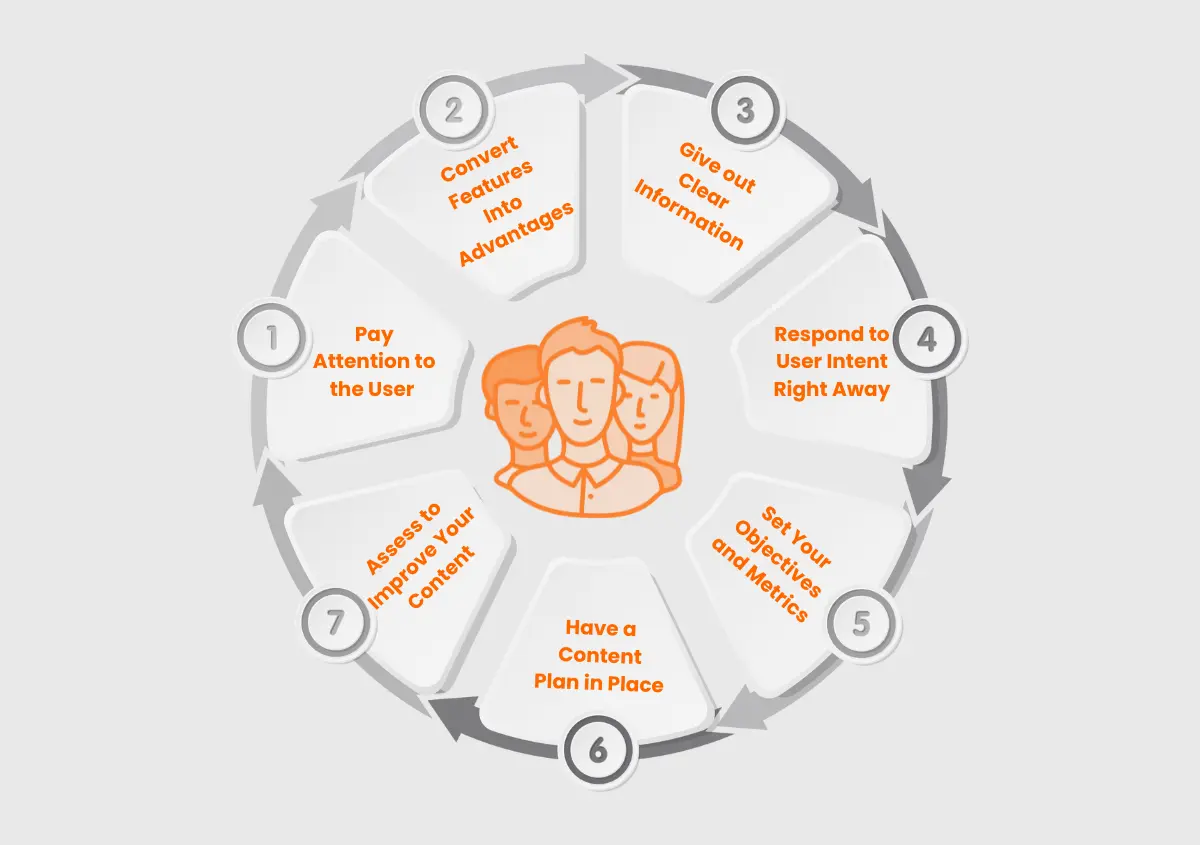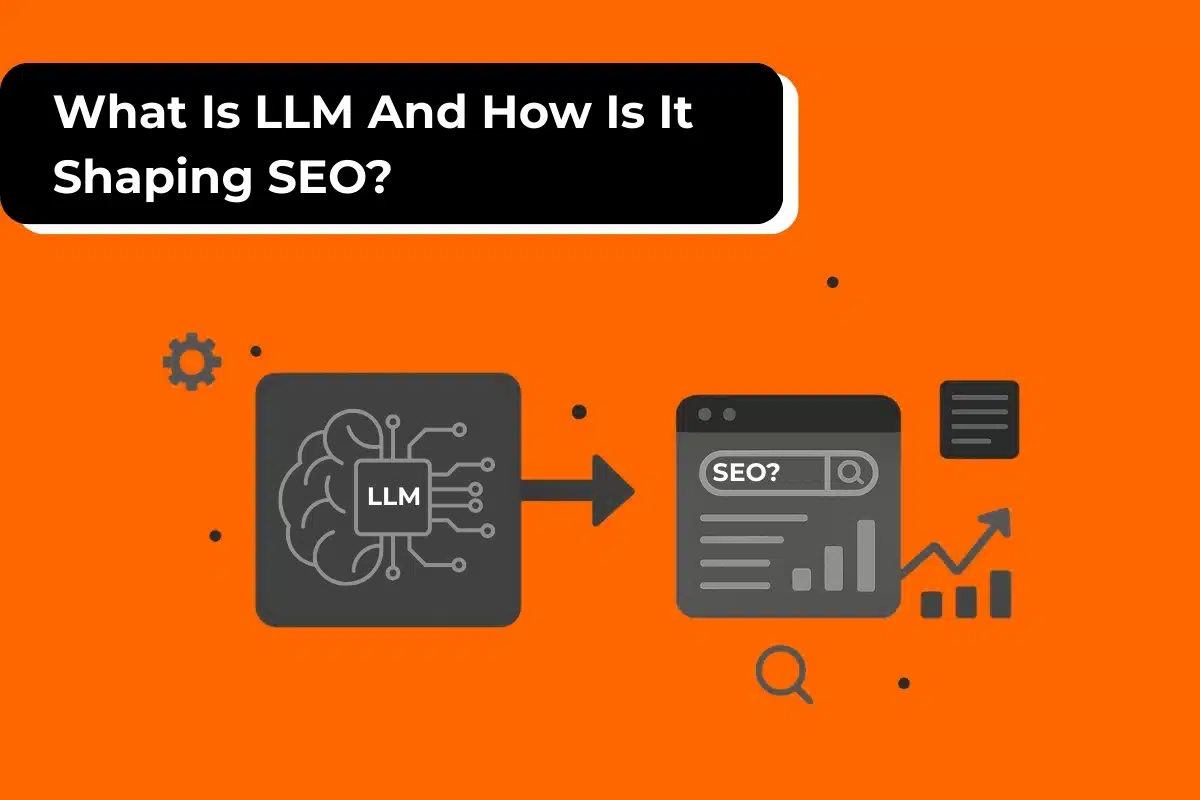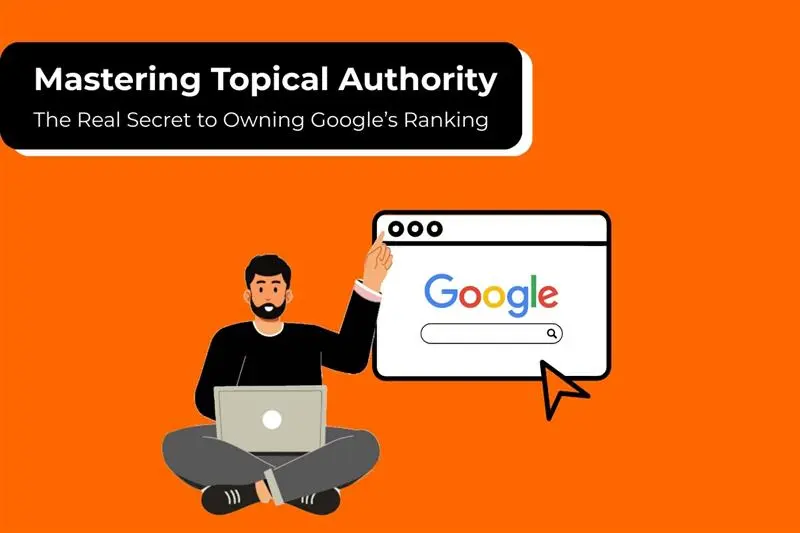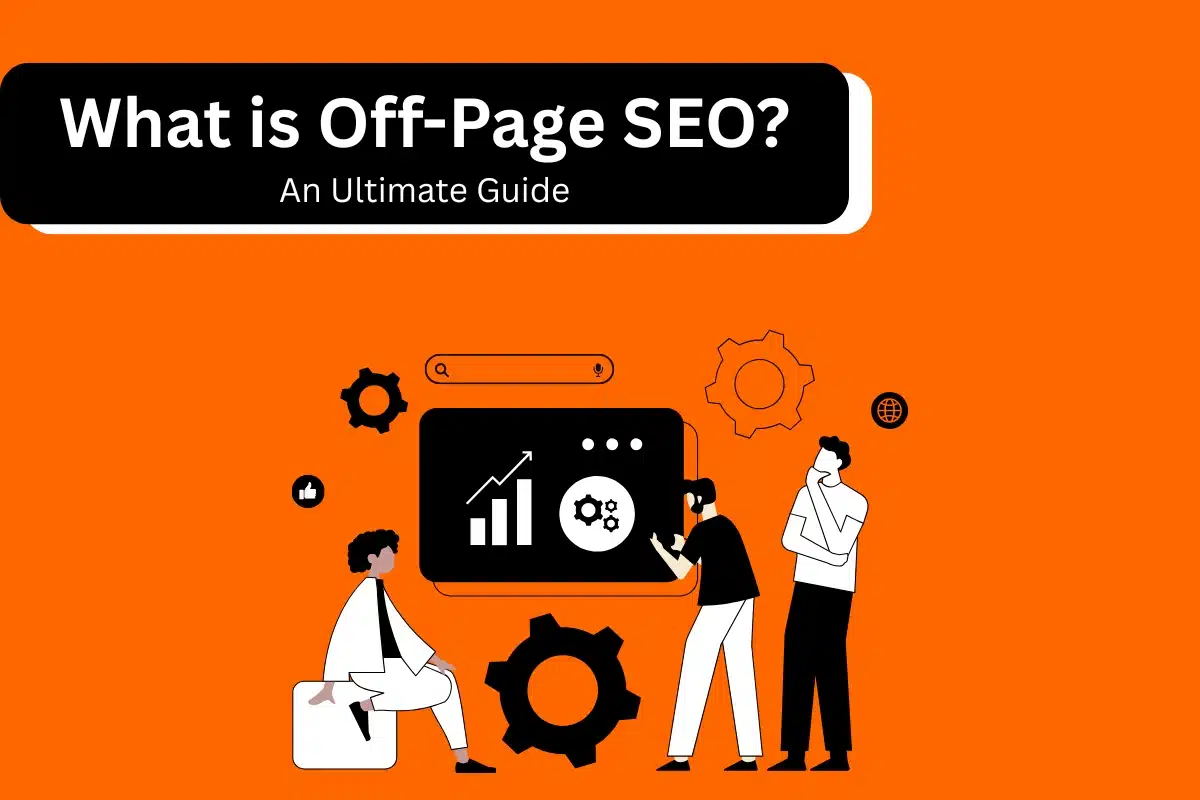There is a target audience—people who will read, watch, and/or look at your content—so content is necessary. Remember that you are not creating content to record and preserve the values of your organization. You create content for visitors or prospects who are interested in learning more about you.
Crafting content that puts the user first rather than for other irrelevant reasons is what it means to be user-focused. You can increase the effectiveness of your content marketing and enhance user perception with user centric content.
What is User Centric Content?
Content that is entirely focused on the person viewing it is called user-centric content. Expanding this, content that caters to the requirements, tastes, and objectives of your target audience is said to be user-centered. It promotes trust, engagement, and loyalty with your readers and prospects.
Most marketers consider search engine algorithms, industry standards, and the consumer when producing content, particularly for search engine optimization (SEO). The end user who interacts with your content is the only audience that is targeted by user-focused content.
Many user-focused content formats are available, such as videos, tests, images, and infographics. In general, you can target a user with whatever you draft or create that they will engage with.
That said, how can you produce user-centered content that both connects with and advances your company’s goals? We’ll be delving into this, but let’s first understand why user-centric content is important.
Importance of User Centric Content
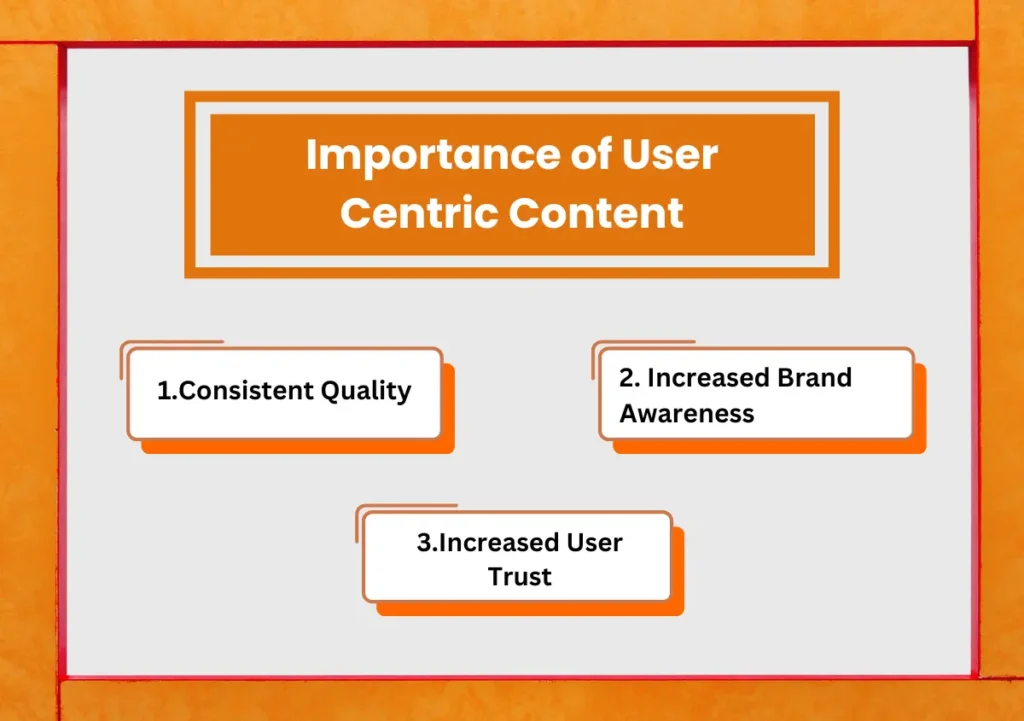
Over time, user-focused content may increase conversions and help you make a stronger impression on your audience. Additional advantages of user-focused content are as follows.
- Consistent Quality: Your offering will be of a higher caliber if you give it more thought. You may keep generating more offerings that help your users as long as you put in the effort to create high-quality content.
- Increased Brand Awareness: People will remember your name as you publish more content that is focused on them. When they need what you are offering, they will come to you for information and may even purchase your product or service even if they don’t convert right away.
- Increased User Trust: Content creation allows consumers to learn more about your brand. They will start to trust you as you put yourself out as an industry expert and reliable knowledge source.
How to Create User-Centric Content?
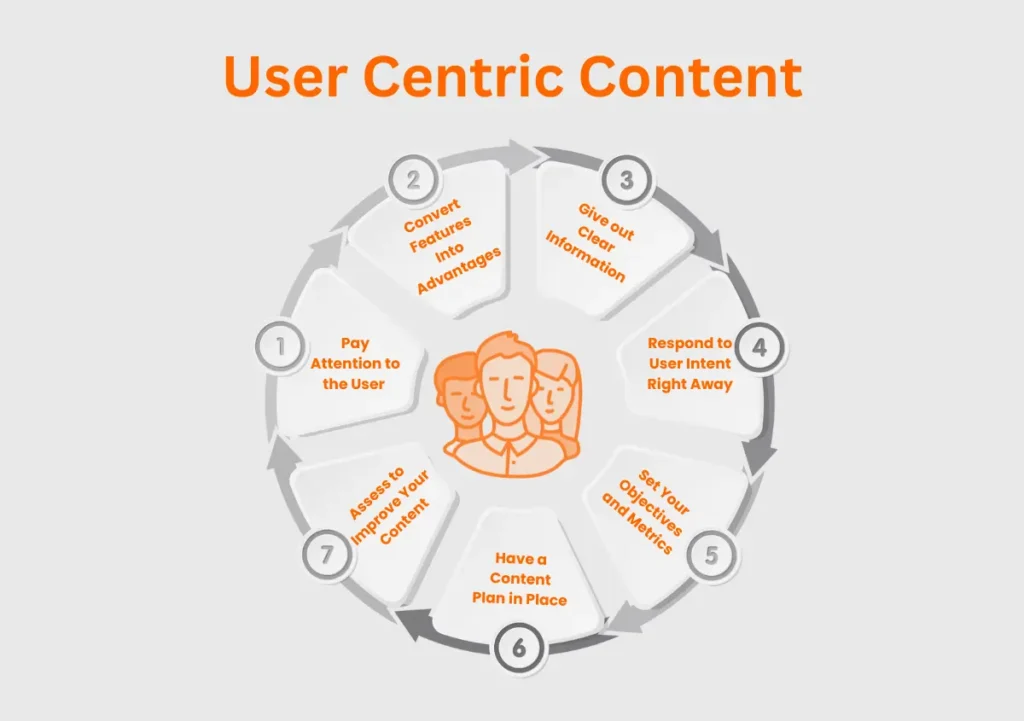
1. Pay Attention to the User Rather Than the Algorithm.
To start producing user-centered content, you must first understand your users’ personas, behaviors, and interests. To learn more about the demographics, motives, pain points, and expectations of your users, you can employ a variety of user research techniques, including personas, surveys, user journeys, interviews, and analytics. You can develop user segments and profiles using user research, which will inform your content strategy and choices.
Your content should be user-friendly above everything else, and the algorithm will take care of itself. Google will give preference to websites that give consumers more attention since they are attempting to determine which content is most relevant to searches.
For instance, the algorithm may be more receptive to content with plenty of text and frequent keyword additions. But, readers will leave your content if it is difficult to read or scan, which is bad for SEO.
Making your content helpful to readers will encourage more people to interact with it, which will improve your position on Google and send it in a favorable direction.
2. Convert Features Into Advantages.
Despite what might initially appear to be the case, features and advantages are not the same. Features are factual, evocative descriptions of your services/ products. Benefits are those characteristics that improve the quality of life for the user.
Let’s say you are a software vendor to marketing firms. Your characteristics may be:
- Cross-platform compatibility
- Features that have auto-save options
- Options for storing data
The advantages might resemble these:
- increased output with marketing automation technologies
- reduced expenses by combining integration and storage characteristics
- Improved security and reduced shutdown risk thanks to round-the-clock assistance
Tell your audience why you are the best option for them and how you will make their present situation better.
3. Give out Clear Information.
Giving too much information about your product is the last thing you want to do, even if it might be tempting to do so. To make your argument, summarize the most crucial details on each page and use simple, direct language.
Users want information almost instantly; they don’t want to read walls of text or tons of unnecessary stuff. Simplify complex concepts and use straightforward language to maintain your website accessible to all audiences.
4. Respond to User Intent Right Away.
Putting the most important information first in your content can help viewers swiftly take in more of it. Focusing on user intent can increase click-through rates and ranks while facilitating quick learning.
Imagine a recipe page where many long paragraphs of background material precede the recipe. Most readers will scroll to the bottom of the page without even skimming the introduction. Give users the most important information first if you want them to return.
5. Set Your Objectives and Metrics.
Setting objectives and KPIs for your content is the next stage. What are you hoping to accomplish? How are you going to gauge your success? The SMART framework helps to establish content goals that are quantifiable, attainable, precise, pertinent, and have a deadline. For instance, you may like to increase your website’s traffic, retention, or conversion rates. To monitor and assess the performance of your content, you can use tools and key performance indicators (KPIs), like Google Analytics.
6. Have a Content Plan in Place.
You can make a content strategy that specifies what content you will generate, when, where, and how after you thoroughly understand your consumers and goals. To arrange your content formats, deadlines, channels, and themes, use a content calendar. A content matrix may also be used to map your content to buyer’s journey phases and user categories. You may produce content that is pertinent, valuable, and consistent for your consumers using a well-structured content plan.
7. Assess to Improve Your Content.
Testing and content optimization based on data and user input is the last phase. You could gather and analyze user feedback on your content using many techniques, including A/B testing, heatmaps, surveys, and usability testing. Tools like Google Search Console can be used to track and enhance the exposure and ranking of your content. You could find and address any problems in your content and improve user experience by testing and optimizing it.
Read Also: Finding Google Ads Customer ID: Learn How?
Final Thoughts
You need to spend on a content strategy if you want to offer your content the best chance of attracting prospects. The wisest thing to do is to invest in content marketing services.
Website Pandas will take care of every stage of your content development, from ideation to launch, so you can focus more on managing your business needs and goals. With your branding in mind, our team can knock out user-focused content that is relevant to your brand and requirements.
Want to know more? Let’s discuss our content marketing offerings on call, or ask for a free quotation!

